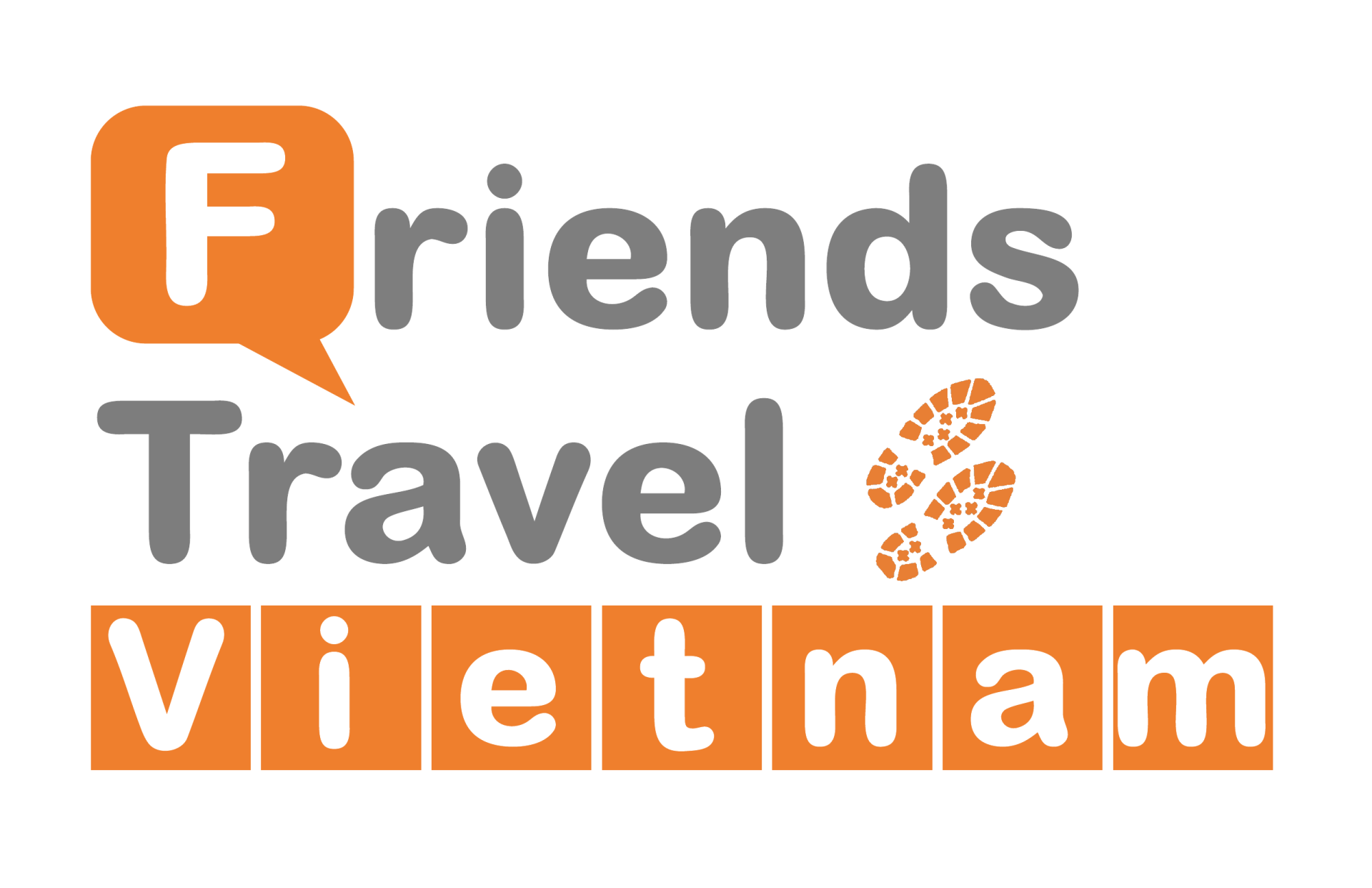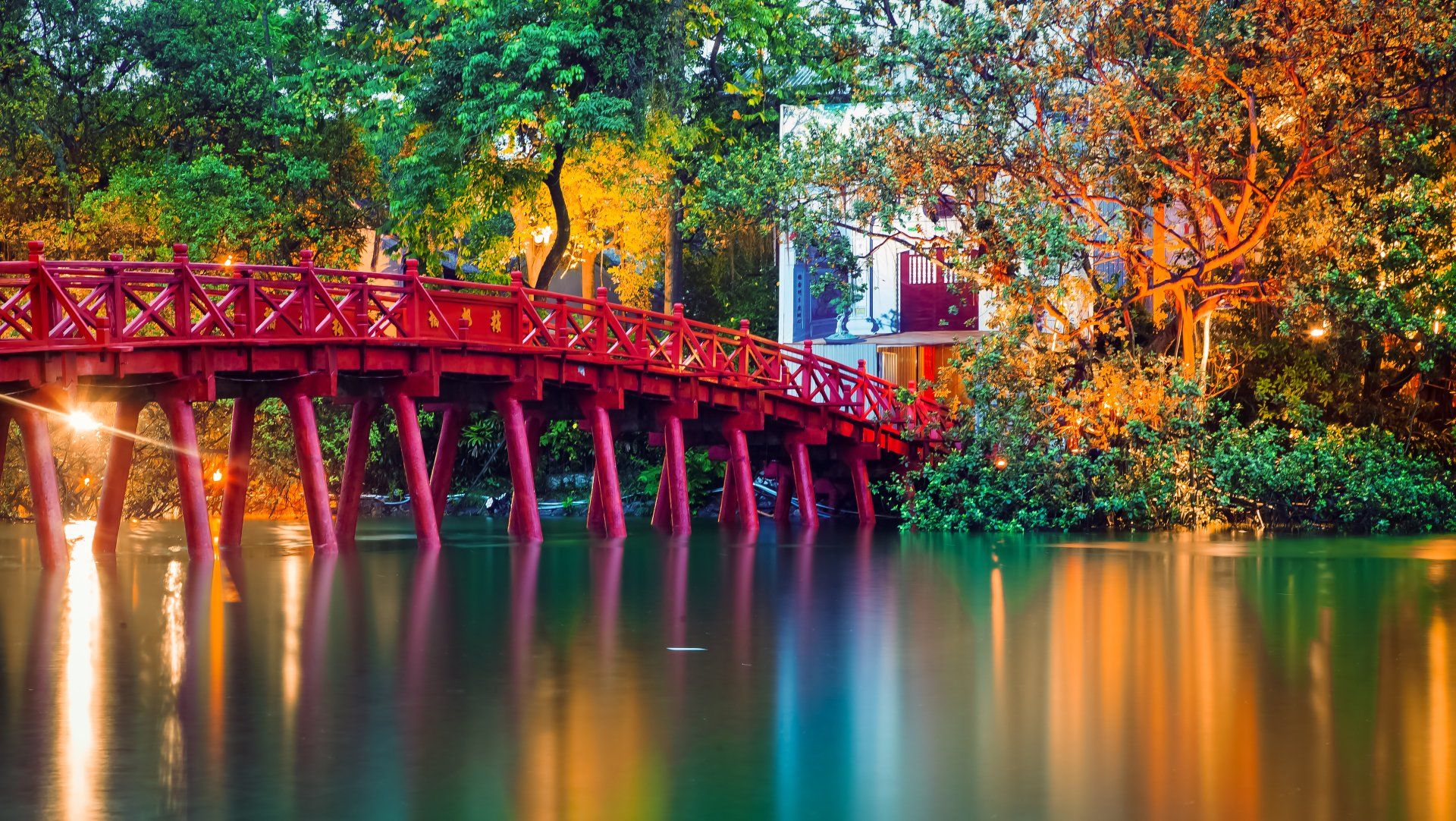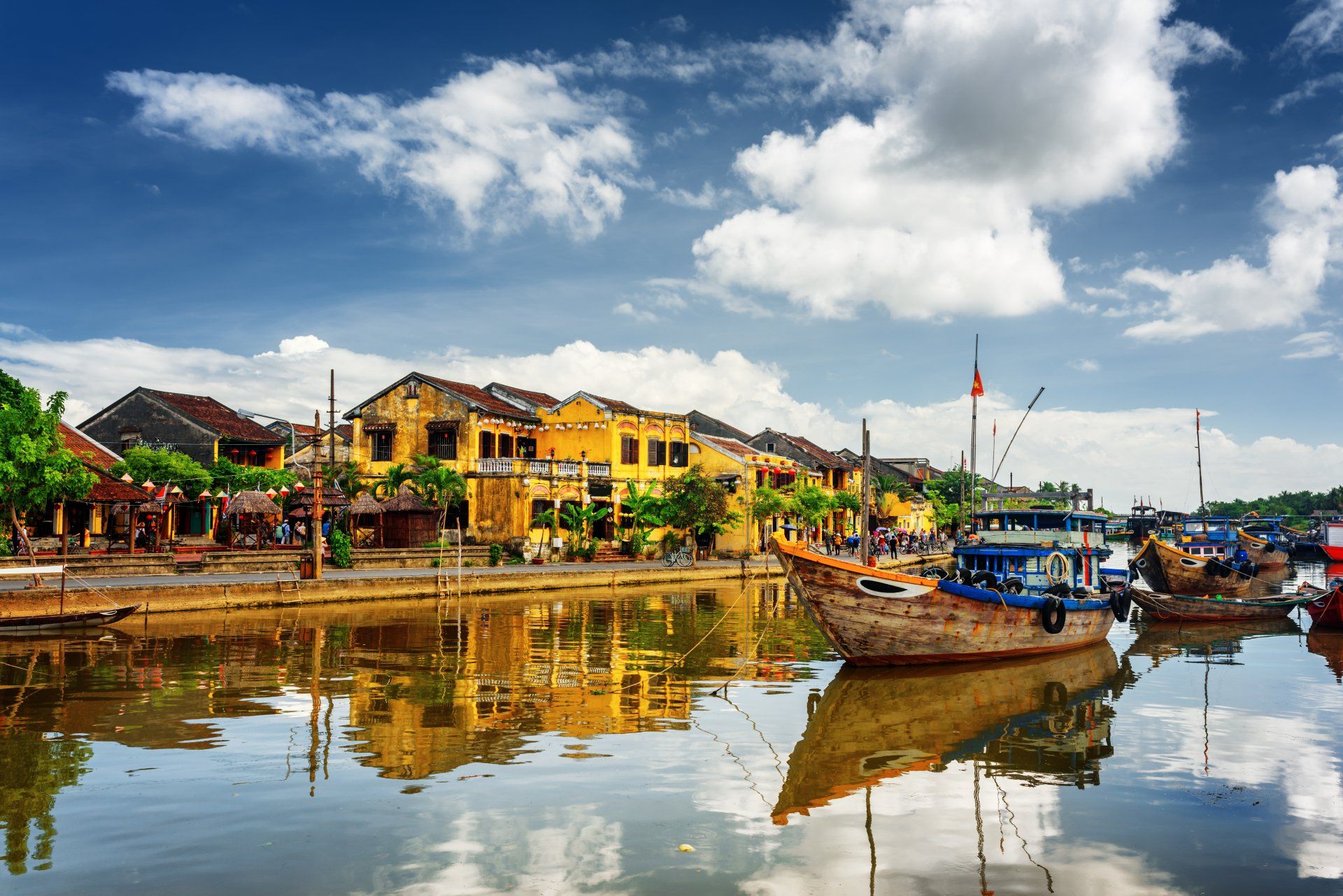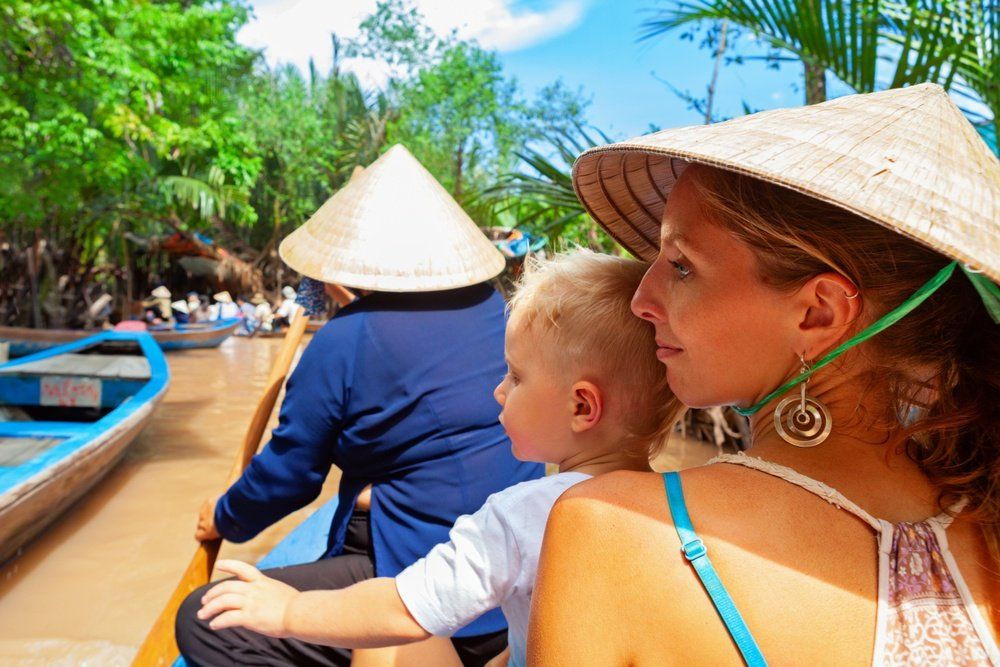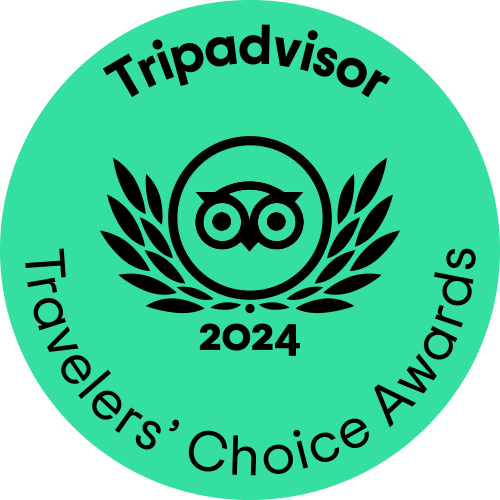Your Vietnam Bookings Website
Food & Drinks in Vietnam
What to Eat & to drink?
Friends Travel Vietnam the Travel Company Turning Travellers Into Friends Since 2013
Travel packages, private tours, group tours
24/7 Support
Lowest Price Guarantee
Thousands of Reviews
Food & Drinks in Vietnam
Internationally speaking, Thai food may be the most heralded of all the Southeast Asian cuisines, but true connoisseurs would go for Vietnamese every time. Light, subtle in flavour and astonishing in their variety, Vietnamese dishes are boiled or steamed rather than stir-fried, and a huge emphasis is placed on herbs and seasoning – no great surprise in this land of diverse climates.
In the south, Indian and Thai influences add curries and spices to the menu, while other regions have evolved their own array of specialties, most notably the foods of Hué and Hoi An. Buddhism introduced a vegetarian tradition to Vietnam, while much later the French brought with them bread, dairy products, pastries and the whole café culture. Hanoi, Ho Chi Minh City and the major tourist centres are now well provided with everything from street hawkers to hotel and Western-style restaurants, and even ice-cream parlours; in such places, you’ll also find a few restaurants putting on cooking classes.
The quality and variety of food is generally better in the main towns than off the beaten track, where restaurants of any sort are few and far between. That said, you’ll never go hungry; even in the back of beyond, there’s always some stall selling a noodle soup or rice platter and plenty of fruit to fill up on.
Vietnam’s national drink is green tea, which is the accompaniment to every social gathering or business meeting and is frequently drunk after meals. At the harder end of the spectrum, there’s also rice wine, though some local beer is also excellent, and an increasingly wide range of imported wines and spirits.
Index Food & Drinks in Vietnam
General Travel Tips
Travel Entertainment
Eating in Vietnam...
Hanoi may be Vietnam’s administrative capital, but Ho Chi Minh City is without doubt its culinary capital. Besides Vietnamese cuisine, which these days enjoys global popularity, just about every other type of food you could imagine is served here, including Indian, Italian, Brazilian, Japanese, Mexican, Lebanese and German, though perhaps predictably French restaurants comprise the most formidable foreign contingent in town. The French legacy is also evident in the city’s abundance of cafés, which are scattered throughout the city.
Though you’ll probably be tempted by a pizza or burrito at some time during your stay, it would be a crime to ignore the fabulous variety of indigenous food on offer, both in sophisticated restaurants and at streetside stalls. Owing to the transitory nature of foodstalls, it’s impossible to make specific recommendations, but there are plenty to choose from.
One area well worth checking out in the evening is around Ben Thanh market, where a cluster of foodstalls offer a bewildering variety of dishes, many specializing in seafood.
Where to eat in Vietnam
Broadly speaking, there are two types of eating establishment to choose from. One step up from hawkers peddling their dish of the day from shoulder poles or handcarts are street kitchens – inexpensive joints aimed at locals. More formal, Western-style restaurants come in many shapes and sizes, from simple places serving unpretentious Vietnamese meals to top-class establishments offering high quality Vietnamese specialties and international cuisine.
While most eating establishments stay open throughout the year, some close over Tet. The Vietnamese eat early: outside the major cities and tourist areas; food stalls and street kitchens rarely stay open beyond 8pm and may close even earlier, though they do stay open later in the south, especially in Ho Chi Minh City. You’ll need to brush up your chopstick-handling skills, too, although other utensils are always available in places frequented by tourists – in Western-style restaurants you won’t be expected to tackle your steak-frites with chopsticks.
When it comes to paying, the normal sign language will be readily understood in most restaurants. In street kitchens you pay as you leave – either proffer a few thousand dong to signal your intentions, or ask bao nhieu tien? (“how much is it?”). As with accommodation, prices are listed in dollars throughout the guide but exchange rates may be wildly different by the time you travel and the smaller, local establishments often prefer to be paid in dong.
Street Kitchens in Vietnam...
Eating on the street may not be to every visitor’s taste, but those willing to take the plunge usually put it up among their favourite experiences in the country – the food is often better in quality to that found at restaurants, it’s much cheaper, and a whole lot more fun. Street kitchens range from makeshift food stalls, set up on the street round a cluster of pint-size stools, to eating houses where, as often as not, the cooking is still done on the street but you either sit in an open-fronted dining area or join the overspill outside. Both tend to have fixed locations, though only the eating houses will have an address – which usually doubles as their name.
Some places stay open all day (7am–8pm), while many close once they’ve run out of ingredients and others only open at lunch time (10.30am–2pm). To be sure of the widest choice and freshest food, it pays to get there early (as early as 11.30am at lunch time, and by 7pm in the evening), and note that the best places will be packed around noon.
Restaurants in Vietnam
If you’re after more relaxed dining, where people aren’t queuing for your seat, then head for a Western-style Vietnamese restaurant (nha hang), which will have chairs rather than stools, a name, a menu and will often be closed to the street. In general these places serve a more varied selection of Vietnamese dishes than the street kitchens, plus a smattering of international – generally European – dishes.
Menus at this level usually show prices, particularly in areas popular with tourists. If there are no prices on your menu, confirm them with staff before you start eating to avoid any potential overcharging issues. Prices vary considerably depending upon what you order, but you’ll get a modest meal for less than $5 per head. Opening hours at such places are usually from 10.30am to 2pm for lunch, and in the evening from 5pm to no later than 9pm, or 8pm in the north.
In the main tourist haunts, you’ll find cheap and cheerful cafés aimed at the backpacker market and serving often mediocre Western and Vietnamese dishes – from burgers and banana pancakes to spring rolls, noodles and other Vietnamese standards. They have the advantage, however, of all-day opening, usually from 7am to 11pm or midnight. And, should you crave a reasonably priced Western-style breakfast, fresh fruit salad or a mango shake, these are the places to go.
As you move up the price scale, the decor and the cuisine become more sophisticated and the menu more varied. The more expensive restaurants (including the smarter hotel dining rooms) tend to stay open later in the evening, perhaps until 9.30pm or 10.30pm. Some have menus priced in dollars, and more and more accept credit cards. Usually menus indicate if there’s a service charge, but watch out for an additional 3–4 percent on credit card payments. These restaurants can be relatively fancy places, with at least a nod towards decor and ambience, and correspondingly higher prices (a meal for two is likely to cost at least $20 and often much more).
The most popular foreign cuisine on offer is French, though both Hanoi and Ho Chi Minh City boast some pretty good international restaurants, including Thai, Chinese, Tex Mex, Indian and Italian. You’ll find these international cuisines, and upper-class Vietnamese restaurants, in Hanoi, Ho Chi Minh City, Hué, Da Nang, Hoi An and Nha Trang, though they’re scarce in the rest of the country.
Vietnamese Food is...
The staple of Vietnamese meals is rice, with noodles a popular alternative at breakfast or as a snack. Typically, rice will be accompanied by a fish or meat dish, a vegetable dish and soup, followed by a green tea digestive. Seafood and fish – from rivers, lakes, canals and paddy fields as well as the sea – are favoured throughout the country, either fresh or dried. The most commonly used flavourings are shallots, coriander and lemon grass. Ginger, saffron, mint, anise and a basil-type herb also feature strongly, and coconut milk gives some southern dishes a distinctive richness.
Even in the south, Vietnamese food tends not to be over-spicy; instead chilli sauces or fresh chillies are served separately. Vietnam’s most famous seasoning is the ubiquitous nuoc mam, a nutrient-packed sauce which either is added during cooking or forms the base for various dipping sauces. Nuoc mam is made by fermenting huge quantities of fish in vats of salt for between six months and a year, after which the dark brown liquid is strained and graded according to its age and flavour. Foreigners usually find the smell of the sauce pretty rank, but most soon acquire a taste for its distinctive salty-sweetness.
Soups and noodles in Vietnam
Though it originated in the north, another dish you’ll find throughout Vietnam is pho (pronounced as the British say “fur”), a noodle soup eaten at any time of day but primarily at breakfast. The basic bowl of pho consists of a light beef broth, flavoured with ginger, coriander and sometimes cinnamon, to which are added broad, flat rice-noodles, spring onions and slivers of chicken, pork or beef. At the table you add a squeeze of lime and a sprinkling of chilli flakes or a spoonful of chilli sauce.
Countless other types of soup are dished up at street restaurants. Bun bo is another substantial beef and noodle soup eaten countrywide, though most famous in Hué; in the south, hu tieu, a soup of vermicelli, pork and seafood noodles, is best taken in My Tho. Chao (or xhao), on the other hand, is a thick rice gruel served piping hot, usually with shredded chicken or filleted fish, flavoured with dill and with perhaps a raw egg cooking at the bottom; it’s often served with fried breadsticks (quay). Sour soups are a popular accompaniment for fish, while lau, a standard in local restaurants, is more of a main meal than a soup, where the vegetable broth arrives at the table in a steamboat (a ring-shaped metal dish on live coals or, nowadays, often electrically heated). You cook slivers of beef, prawns or similar in the simmering soup, and then drink the flavourful liquid that’s left in the cooking pot.
Fish and Meat in Vietnam...
Among the highlights of Vietnamese cuisine are its succulent seafood and freshwater fish. Cha ca is the most famous of these dishes: white fish sauteed in butter at the table with dill and spring onions, then served with rice noodles and a sprinkling of peanuts; invented in Hanoi, it’s now found in most upmarket restaurants.
Another dish found in more expensive restaurants is chao tom (or tom bao mia), consisting of savoury shrimp pate wrapped round sweet sugar cane and fried. Ca kho to, fish stew cooked in a clay pot, is a southern speciality.
Vegetables – and vegetarian food
If all this has put you off meat for ever, it is possible to eat vegetarian food in Vietnam, though not always easy. The widest selection of vegetables is to be found in Da Lat where a staggering variety of tropical and temperate crops thrive. Elsewhere, most restaurants offer a smattering of meat-free dishes, from stewed spinach or similar greens, to a more appetizing mix of onion, tomato, bean sprouts, various mushrooms, peppers and so on; places used to foreigners may be able to oblige with vegetarian spring rolls (nem an chay or nem khong co thit). At street kitchens you’re likely to find tofu and one or two dishes of pickled vegetables, such as cabbage or cucumber, while occasionally they may also have aubergine, bamboo shoots or avocado, depending on the season.
However, unless you go to a specialist vegetarian outlet – of which there are some excellent examples in Ho Chi Minh City, Hanoi and Hué – it can be a problem finding genuine veggie food: soups are usually made with beef stock, morsels of pork fat sneak into otherwise innocuous-looking dishes and animal fat tends to be used for frying.
The phrase to remember is an chay (vegetarian), or seek out a vegetarian rice shop (tiem com chay). Otherwise, make the most of the first and fifteenth days of the lunar month when many Vietnamese Buddhists spurn meat and you’re more likely to find vegetarian dishes on offer.
Snack in Vietnam...
Vietnam has a wide range of snacks and nibbles to fill any yawning gaps, from huge rice-flour crackers sprinkled with sesame seeds to all sorts of dried fish, nuts and seeds. Banh bao are white, steamed dumplings filled with tasty titbits, such as pork, onions and tangy mushrooms or strands of sweet coconut. Banh xeo, meaning sizzling pancake, combines shrimp, pork, bean sprouts and egg, all fried and then wrapped in rice paper with a selection of greens before being dunked in a spicy sauce. A similar dish, originating from Hué – a city with a vast repertoire of snack foods – is banh khoai, in which the flat pancake is accompanied by a plate of star fruit, green banana and aromatic herbs, plus a rich peanut sauce.
Markets are often good snacking grounds, with stalls churning out soups and spring rolls or selling intriguing banana-leaf parcels of pate (a favourite accompaniment for bia hoi), pickled pork sausage or perhaps a cake of sticky rice.
A relative newcomer on the culinary scene is French bread, made with wheat flour in the north and rice flour in the south. Baguettes – sometimes sold warm from streetside stoves – are sliced open and stuffed with pate, soft cheese or ham and pickled vegetables.
Fruit in Vietnam
With its diverse climate, Vietnam is blessed with both tropical and temperate fruits, including dozens of banana species. The richest orchards are in the south, where pineapple, coconut, papaya, mango, longan and mangosteen flourish. Da Lat is famous for its strawberries, while the region around Nha Trang produces the peculiar “dragon fruit” (thanh long). The size and shape of a small pineapple, the dragon fruit has skin of shocking pink, studded with small protuberances, and smooth, white flesh speckled with tiny black seeds. The slightly sweet, watery flesh is thirst-quenching, and so is often served as a drink, crushed with ice.
A fruit that is definitely an acquired taste is the durian, a spiky, yellow-green football-sized fruit with an unmistakably pungent odour reminiscent of mature cheese and caramel, but tasting like an onion-laced custard. Jackfruit looks worryingly similar to durian but is larger and has smaller spikes. Its yellow segments of flesh are deliciously sweet.
Sweet things in Vietnam is...
Vietnam is not strong on desserts – restaurants usually stick to ice cream and fruit, although fancier international places might venture into tiramisu territory. Those with a sweet tooth are better off hunting down a bakery – there’ll be one within walking distance in any urban area – or browsing around street stalls where there are usually candied fruits and other Vietnamese sweetmeats on offer, as well as sugary displays of French-inspired cakes and pastries in the main tourist centres.
Green-coloured banh com is an eye-catching local delicacy made by wrapping pounded glutinous rice around sugary, green-bean paste. A similar confection, found only during the mid-autumn festival, is the “earth cake”, banh deo, which melds the contrasting flavours of candied fruits, sesame and lotus seeds with a dice of savoury pork fat. Fritters are popular among children and you’ll find opportunistic hawkers outside schools, selling banh chuoi (banana fritters) and banh chuoi khoai (mixed slices of banana and sweet potato).
Drinks in Vietnam
Giai khat means “quench your thirst” and you’ll see the signs everywhere, on stands selling fresh juices, bottled cold drinks or outside cafés and bia hoi (draught beer) outlets. Many drinks are served with ice: tempting though it may be, the only really safe policy is to avoid ice altogether – dung bo da, cam on (“no ice, thanks”) should do the trick. That said, ice in the top hotels, bars and restaurants is generally reliable, and some people take the risk in less salubrious establishments with apparent impunity.
A Traditional Tipple in Vietnam
While beer and imported spirits are drunk throughout Vietnam, the traditional tipple is ruou can, or rice-distilled liquor. Until recently, ruou can was regarded as decidedly downmarket, the preserve of labourers, farmers and ethnic minorities. Nowadays, however, it’s becoming popular among the middle class and especially young urban sophisticates – including a growing number of women – as city-centre bars and restaurants begin to offer better quality ruou can.
Recipes for ruou can are a closely guarded secret, but its basic constituents are regular or glutinous rice, the latter of which is said to be more aromatic and have a fuller, smoother taste. Selected herbs and fruits are sometimes steeped in the liquor to enhance its flavour and, supposedly, to add all sorts of medicinal and health benefits. You’ll also see jars containing snakes, geckos and even whole crows. Traditionally, the basic ingredients are heated together and buried in the ground for a month or more to ferment. Nowadays, more modern – and hygienic – techniques are used to produce ruou can for general consumption. Look out for the high-quality rice-distilled liquors marketed under the Son Tinh brand (sontinh.com). Or you are interested to get know more about rice wine culture in Vietnam, join our evening Rice Wine & Dinner Tour (more info...)
The ethnic minorities of the northwest (Thai and Muong) concoct their own home-distilled ruou can, sometimes known as stem alcohol. Visitors are often invited to gather round the communal jar to drink the liquor through thin, bamboo straws. In more traditional villages it’s regarded as a sacred ritual, which it would be an insult to refuse. You will hear the toast Chuc suc khoe (your health) and, for more serious drinking sessions, Tram phan tram (down in one).
What About the Water in Vietnam...
The simple rule is don’t drink tap water in Vietnam, with the exception of a few top hotels which now offer filtered water, and never drink river water. It’s wise also to avoid ice in your drinks except, again, in top hotels and other trustworthy places. Contaminated water is a major cause of sickness due to the presence of pathogenic organisms: bacteria, viruses and cysts. These micro-organisms cause ailments and diseases such as diarrhoea, gastroenteritis, typhoid, cholera, dysentery, poliomyelitis, hepatitis A and giardia – and can be present even when water looks clean and safe to drink.
Fortunately there are plenty of alternative drinks around: hot tea is always on offer, while cheap, bottled water and carbonated drinks are widely available. When buying bottled water check the seal is unbroken and the water is clear, as bottles are occasionally refilled from the tap. Tap water in Hanoi and Ho Chi Minh City is chlorinated and most travellers use it for brushing their teeth without problem, but this is not recommended in rural areas, where water is often untreated. Particular care should be taken anywhere where there is flooding as raw sewage may be washed into the water system.
Water & soft drinks in Vietnam
Tap water is not safe to drink in Vietnam – since bottled water is both cheap and widely available, you shouldn’t need to take the risk anyway. Avoid drinks with ice or those that may have been diluted with suspect water.
Locally made soft drinks are tooth-numbingly sweet, but are cheap and safe – as long as the bottle or carton appears well sealed – and on sale just about everywhere. The Coke, Sprite and Fanta hegemony also means you can find fizzy drinks in surprisingly remote areas. Oddly, canned drinks are usually more expensive than the equivalent-sized bottle, whether it’s a soft drink or beer – apparently it’s less chic to drink from the old-fashioned bottle.
A more effective thirst-quencher is fresh coconut juice, though this is more difficult to find in the north. Fresh juices such as orange and lime are also delicious – just make sure they haven’t been mixed with tap water. Sugar-cane juice (mia da) is safer, since it’s pressed right in front of you. Pasteurized milk, produced by Vinamilk, is now sold in the main towns and cities.
Somewhere between a drink and a snack, ché is made from taro flour and green bean, and served over ice with chunks of fruit, coloured jellies and even sweet corn or potato. In hot weather it provides a refreshing sugar-fix.
Tea & Coffee in Vietnam is...
Tea drinking is part of the social ritual in Vietnam. Small cups of refreshing, strong, green tea are presented to all guests or visitors: water is well boiled and safe to drink, as long as the cup itself is clean, and it’s considered rude not to take at least a sip. Although your cup will be continually replenished to show hospitality, you don’t have to carry on drinking; the polite way to decline a refill is to place your hand over the cup when your host is about to replenish it. Green tea is also served at the end of every restaurant meal, particularly in the south, and usually provided free.
Coffee production has boomed in recent years, largely for export, with serious environmental and social consequences. The Vietnamese drink coffee very strong and in small quantities, with a large dollop of condensed milk at the bottom of the cup. Traditionally, coffee is filtered at the table by means of a small dripper balanced over the cup or glass, which sometimes sits in a bowl of hot water to keep it warm. However, places accustomed to tourists increasingly run to fresh (pasteurized) milk, while in the main cities you’ll now find fancy Western-style cafés turning out decent lattes and cappuccinos. Highland Coffee has become Vietnam’s very own Starbucks-style chain, while out in the sticks you’re best off going for cafés with a Trung Nguyen sign.
Alcoholic drinks in Vietnam
In Vietnam, drinking alcohol is a social activity to be shared with friends. You’ll rarely see the Vietnamese drinking alone and never without eating. Be prepared for lots of toasts to health, wealth and happiness, and no doubt to international understanding, too. It’s the custom to fill the glasses of your fellow guests; someone else will fill yours.
Canned and bottled beers brewed under licence in Vietnam include Tiger, Heineken, Carlsberg and San Miguel, but there are also plenty of very drinkable – and cheaper – local beers around, such as Halida, 333 (Ba Ba Ba) and Bivina. Some connoisseurs rate Bière la Rue from Da Nang tops, though Saigon Export, Hanoi Beer and BGI are also fine brews. Many other towns boast their own local beers, such as Hué (where the main brand is Huda), Hai Phong and Thanh Hoa (where it’s simply named after the town) – all worth a try.
Roughly forty years ago technology for making bia hoi (draught beer) was introduced from Czechoslovakia and it is now quaffed in vast quantities, particularly in the north. Bia hoi may taste fairly weak, but it measures in at up to four percent alcohol. It’s also ridiculously cheap – between 5000đ and 7000đ a glass – and supposedly unadulterated with chemicals, so in theory you’re less likely to get a hangover. Bia hoi has a 24-hour shelf life, which means the better places sell out by early evening, and that you’re unlikely to be drinking it into the wee hours. In the south, you’re more likely to be drinking bia tuoi (“fresh” beer), a close relation of bia hoi but served from pressurized barrels. Outlets are usually open at lunchtime, and then again in the evening from 5pm to 9pm.
Wine (the conventional kind) is becoming increasingly popular in Vietnam – even in small towns, you’ll easily track some down, and imported bottles continue to crop up in the most unexpected places. Local production dates from the French era, and is centred around Da Lat – the main producer is Vang Da Lat, bottles of which will cost from 35,000đ in a shop, and around 70,000đ at a restaurant. Only at top hotels, restaurants or specialist shops will you find decent imported bottles that have been properly stored; you’ll be paying premium prices for these.
Breakfast in Vietnam is...
Vietnamese traditionally breakfast on pho or some other noodle soup, reasoning that these provide enough energy to get through the day; many an expat has come around to this way of thinking. You may also find early-morning hawkers peddling xoi, a wholesome mix of steamed sticky rice with soya bean, sweet corn or peanuts. Simple Western breakfasts (such as bread with jam, cheese or eggs and coffee) are usually available in backpacker cafés or hotels. More upmarket places increasingly stretch to cereals and fresh milk, while some top-class hotels (and a whole bunch of cheaper ones) lay on the full works in their breakfast buffets. In towns, you could always buy jam and bread or croissants for a do-it-yourself breakfast.
We always look forward to hearing from our customers!
You can contact us very easy at any time if you have any questions. We would like to hear from you.
Read More about Destinations In Vietnam
Northern of Vietnam
Everything you need to know about as your destination in the Northern of Vietnam
Central of Vietnam
Everything you need to know about as your destination in the Central of Vietnam
Dreaming of your very own adventure in Vietnam?
We love to talk about travel & sharing more information
Send us your travel requirements for local expert advice and carefully crafted itineraries.
